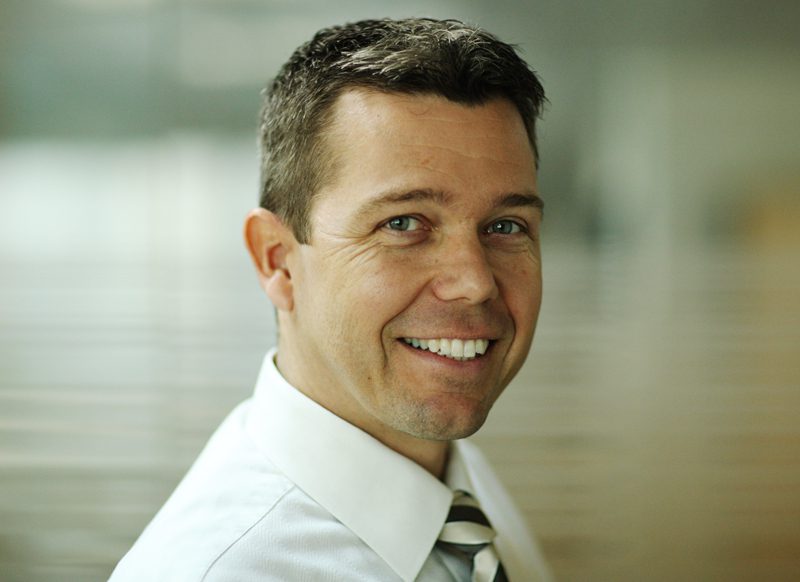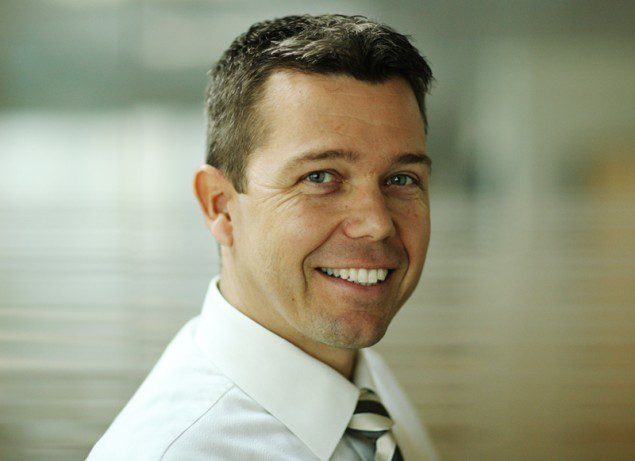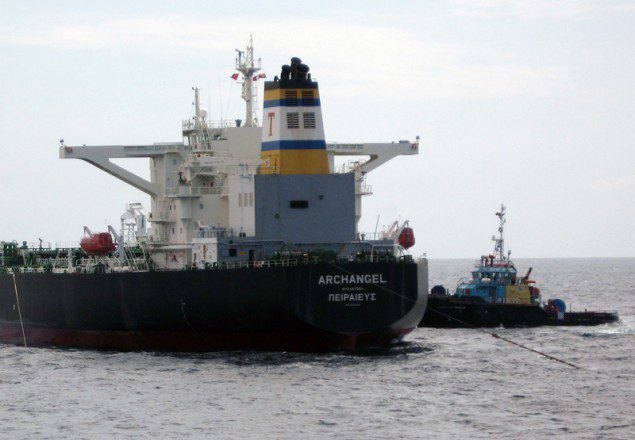Iranian Ship Linked to Houthi Attacks Heads Home Amid Tensions
(Bloomberg) — An Iranian ship that’s been linked to Houthi attacks in the Red Sea is returning home, removing a prominent asset in the area as the Islamic Republic braces...


My interview with SMIT Lamnalco’s Chief Executive Officer, Daan Koornneef, at this year’s Offshore Technology Conference in Houston, Texas.


When I think of SMIT, I think salvage. Tell me a bit about how your business is split up.
SMIT International is mainly known for salvage, it is true, but it actually has four pillars of activities – all of which use tugboats at one stage or another – Terminals, Salvage, Heavy Lift, and Transport. It was the Terminals business that was involved in the transaction that led to the creation of Smit Lamnalco.
The SMIT terminals sector was working in the same area that Lamnalco does. Optimization that was not possible due to the variety of activities. By joining Lamnalco, and the SMIT Terminals business together, Smit Lamnalco provides a full package of turnkey solutions to our clients in the midstream sector. We work in a lot of developing countries. For example, training capacity is very important. The logic of it is that instead of having two companies operating two separate training divisions, now we have one.
When you say training is a major factor, is that due to the use of local people in the areas you operate?
We operate mainly in territorial waters, so we very often have to comply with Cabotage legislation which puts a big emphasis on using local labor to provide services. Compared to the salvage sector which may get called on a moment’s notice to anywhere in the world, we may spend up to 25 years on a single contract, and thus we need to become an integrated part of the local culture. The focus on the management is completely different than that of salvage.
We work with most of the IOCs and NOCs as well.
So tell me a bit more about your operations in relation to offshore field developments.
A key differentiator from the other companies here at the Offshore Technology Conference is that we do not operate in the upstream sector.
Once the field is developed and comes on line, the upstream contractors go off to other projects and that’s when our services take over. We provide services such as mooring support, connecting hoses, maintenance of buoys, inspections, etc.
How long ago did Lamnalco acquire SMIT?
Lamnalco acquired SMIT in 2011. The integration started in 2012 however, and we’re still working on the integration which should be finalized by the end of this year.
What is the corporate communications message you’re looking to get out to the industry about your company?
We offer a very professional and above all, a very reliable service in any location.
Geographically, where does SMIT Lamnalco operate?
We operate where oil and gas come out of the ground, with the exception of Europe. Middle East, Russia, Australia, West Africa…
What are the hottest markets right now for you?
We basically see an increase everywhere.
As CEO, what are your biggest concerns on a daily basis?
Earlier I mentioned reliability as being extremely important and that oil and gas exports are not interrupted. We work in a lot of challenging markets, whether from a security or social unrest point of view. We continuously have to be sure that our partnerships are correct, our union agreements are in order, because these can have a significant impact on our operations.
How do you approach security in some of the areas that you work in? Do you use Private Security Companies (PSCs)?
We have our own security management within our company. We don’t carry guns and are not actively involved in security ourselves, but we manage it by “managing the country”. When we work in a place like Nigeria, all of our vessels are manned by Nigerians.
In places like the Gulf of Aden however, we do have security on board, but we do not do security ourselves, we manage it.
Have you had any security “close calls” over the past few years?
We have had some close calls, but we have not had any significant issues.


How many assets does SMIT Lamnalco operate?
We have 180 vessels in 31 countries, mostly developing countries as I mentioned earlier.
Do you have any ships being built at the moment?
We are building 4 ships, 2 small anchor handlers at Damen Shipyards in Romania, and 2 smaller vessels in Turkey. Hopefully we’ll announce additional orders in the near future. Certainly it is our plan to grow our fleet in existing and new markets.
Will any of these new vessels be headed for the Norwegian Continental Shelf?
No, they will all be headed to the areas where we are operating currently. The other areas, such as the Gulf of Mexico and the North Sea are not that interesting for us because they are quite developed markets. There is less need for a total marine market solutions – we service places like West Africa and the Middle East.
How do you approach the SMS programs in these remote places? Where is your training conducted and how do you develop these programs.
It’s all in-house. We have a full training department to ensure the SMIT Lamnalco standard is used in the places that we work – even when we work with indigenous people who have to be trained from a zero starting point. We give them all the officially recognized courses, such as STCW – there is no compromise at any time or any place.
Why would someone want to work for SMIT Lamnalco?
I think we are a company with a very clear identity, product, and future. Race and religion is respected, and we provide an equally challenging career opportunity for all.
Tell me about your career prior to becoming CEO of SMIT Lamnalco.
After graduating from the Dutch Naval Academy with a naval architecture degree, I became an Operations Officer, but first I sailed submarines and later went on to a guided missile frigate. I specialized in mine countermeasures, diving, and EOD.
How long did you spend in the Navy?
12 years.
How long is the program at the Dutch Naval Academy?
It’s a 3 year bachelors program, followed by a 2 year masters program.
Why naval architecture?
I thought it was quite interesting and I liked the maritime industry. I knew that following my departure from the Navy that I wanted to do something with vessels. Everyone can do management, and IT I thought was boring, and I wanted to specialize in something. I finished my masters at Delft University and then went on from there.
What would be your advice to someone leaving the service, or to anyone entering this industry? What has been the key to your success?
I think the most important thing is to do something that you really like to do. Do not aim at salaries or job titles or any of that. All of the successful people that I know are passionate about what they do.
Join the gCaptain Club for curated content, insider opinions, and vibrant community discussions.


Join the 105,943 members that receive our newsletter.
Have a news tip? Let us know.
Access exclusive insights, engage in vibrant discussions, and gain perspectives from our CEO.
Sign Up




Maritime and offshore news trusted by our 105,943 members delivered daily straight to your inbox.



Essential news coupled with the finest maritime content sourced from across the globe.
Sign Up